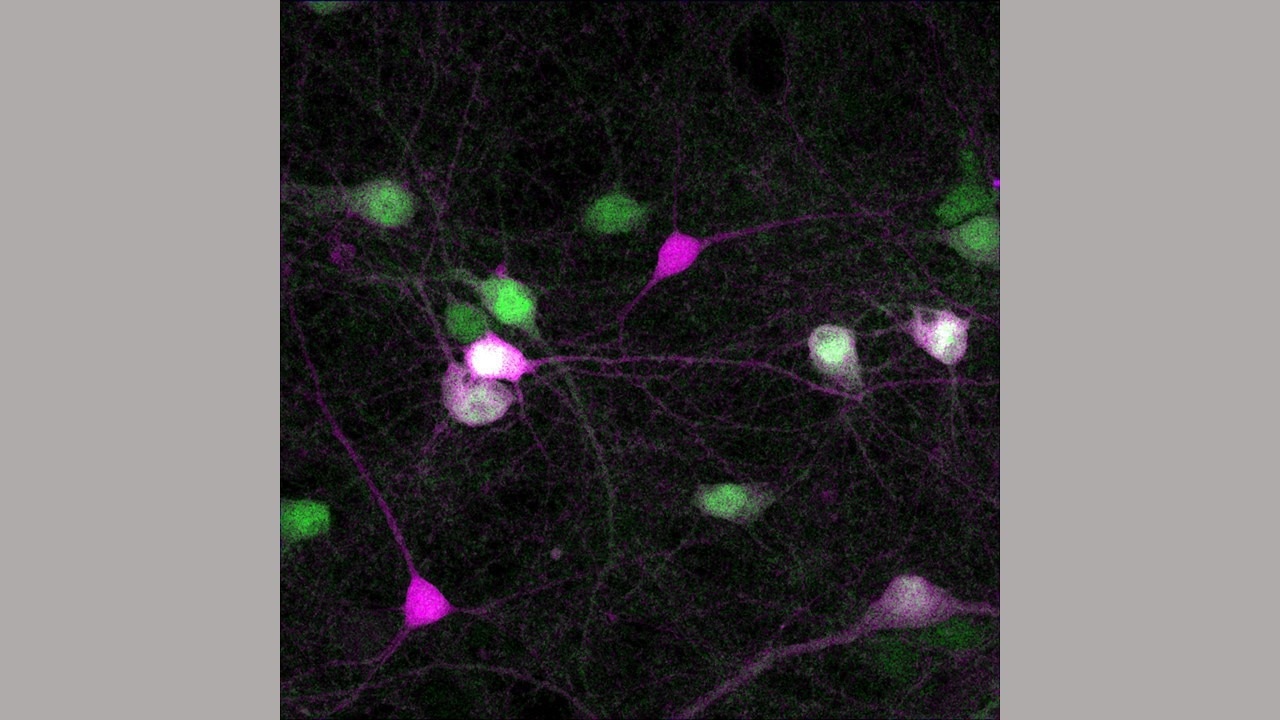Researchers from Johns Hopkins Medicine claim to have successfully “slid” genetic instructions into a cell and produced essential proteins that were lacking from those cells using a cell’s standard process for creating proteins.
 Excitatory/inhibitory neuronal reporter imaged in rat hippocampal neuronal cultures. Image Credit: Alexei Bygrave, Johns Hopkins Medicine
Excitatory/inhibitory neuronal reporter imaged in rat hippocampal neuronal cultures. Image Credit: Alexei Bygrave, Johns Hopkins Medicine
The researchers may have a new way of explicitly targeting certain cell types for various illnesses that might be addressed with gene therapy if more studies confirm their proof-of-concept findings. These conditions include brain-afflicting neurodegenerative illnesses, such as Alzheimer’s disease, as well as various types of blindness and several malignancies.
According to Seth Blackshaw, PhD, professor of neuroscience in the Sol Snyder Department of Neuroscience and member of the Institute for Cell Engineering at the Johns Hopkins University School of Medicine, it is crucial to precisely target the cell that is causing the disease in each structure, such as the brain, to jumpstart the protein-making process of specific genes safely.
He states that treatments that do not precisely target diseased cells risk having unintended consequences on other healthy cells.
The efficiency of the two methods now being utilized to introduce protein-making packages into cells varies significantly in both animal models and humans.
We wanted to develop a gene expression delivery tool that’s broadly useful in both preclinical and clinical models.”
Seth Blackshaw, Professor, Neuroscience, Sol Snyder Department of Neuroscience, Johns Hopkins University School of Medicine
Using so-called “mini promoters,” which control the expression or protein-making process of certain regions of DNA, is one contemporary approach to transmitting biochemical packages. According to Blackshaw, this approach frequently fails to express genes in the proper cell type.
Serotype-mediated gene expression is a different technique that includes attaching tools to proteins present on the surface of particular cell types.
However, according to Blackshaw, these approaches are hit-or-miss in their capacity to precisely target only one type of cell, and they frequently fall short in humans even after being tested successfully in animal models.
The current proof-of-concept study, published on October 1st, 2022, in Nature Communications, originatesst, 2022, in Nature Communications, has its origins in earlier work by Jonathan Ling, Ph.D., an assistant professor of pathology at Johns Hopkins University.
Ling published “maps” showing how different cell types use messenger RNA, a cousin of DNA, to create genetic templates that result in a constantly changing set of proteins in the cell. The modifications depend on the type and location of a cell. Alternative splicing is typically used by cells to change the types of proteins they can produce.
Ling’s maps show how cells remove introns, or unnecessary messenger RNA segments, and only retain the exons, or informative regions of the genome, which are responsible for protein expression.
Introns, on the other hand, are frequently quite large—up to millions of base pairs long—and are too enormous to be packaged in the present gene expression delivery systems. According to Ling, a portion of intron DNA that was short enough to be packaged into the gene expression delivery systems Blackshaw wished to test was detected in around 20% of alternative splicing patterns.
Fortunately, the alternative splicing patterns might possibly be used for preclinical research along with clinical use since they were similar in mouse and human DNA for their functions.
Blackshaw and Ling created packets of alternatively spliced messenger RNA that could be delivered into cells by a benign virus along with Alexei Bygrave, a former postdoctoral researcher currently an assistant professor at Tufts University. SLED, short for splicing-linked expression design, was given to the packages.
The package opens when it is slid into a cell. The study team inserted genetic “promoters” that activate the creation of proteins from the packaged SLED product since the SLED system is not inherently incorporated into the genome.
The scientists at Johns Hopkins Medicine built SLED systems for photoreceptors and excitatory neurons that were cultured in the lab, and they were able to produce proteins only in those cell types about half the time. About 5% of the time, current mini promoter systems successfully insert the proteins where they belong.
The team also administered SLED packages to mice with photoreceptors in the retina that are affected by retinitis pigmentosa, a retina disease that lacks a functional PRPH2 gene. The researchers discovered proof that the SLED packages contributed to the production of PRPH2 proteins in the treated mice’s photoreceptors.
During laboratory culture, the researchers introduced SLED packages into human ocular melanomas that lacked the SF3B1 gene. The RNA-producing protein that the SLED package released caused the melanoma cells to perish.
According to Blackshaw, the SLED system might perform best when used in conjunction with other gene delivery technologies. As a result, his lab is investigating ways to miniaturize introns so that they may fit larger-sized introns into SLED systems.
Blackshaw and Ling have filed patent applications involving SLED technology.
Source:
Journal references:
- Ling, J. P., et al. (2022). Cell-specific regulation of gene expression using splicing-dependent frameshifting. Nature Communications. doi.org/10.1038/s41467-022-33523-2
- Ling, J. P., et al. (2022). ASCOT identifies key regulators of neuronal subtype-specific splicing. Nature Communications. doi.org/10.1038/s41467-019-14020-5